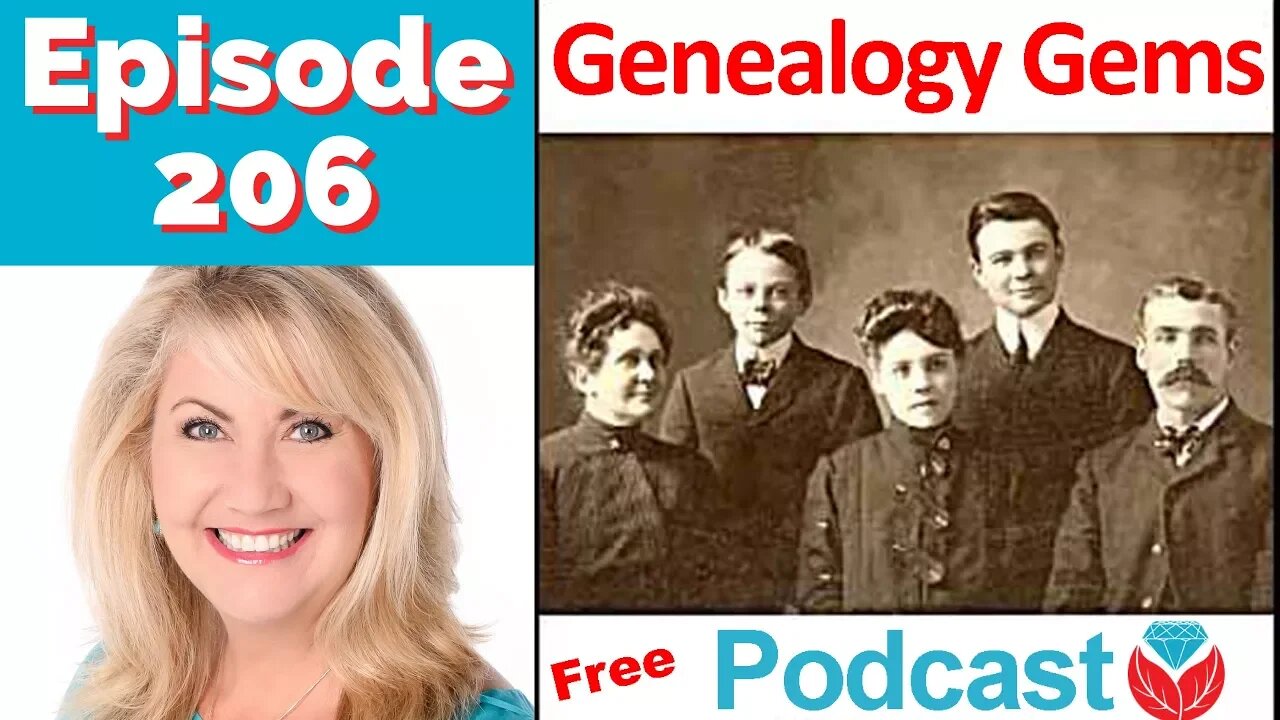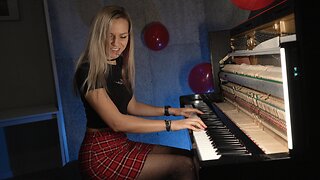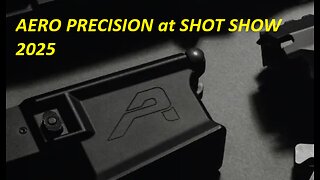Premium Only Content

The Genealogy Gems Podcast
Episode 206 with Lisa Louise Cooke
www.GenealogyGems.com
Download our FREE App!
In this episode:
Lisa reprises a favorite research detour into vehicle forensics—to identify an old family car—and shares tips for creating short family history books like those she given as holiday gifts to loved ones.
Hear letters from listeners on a special adoption discovery and a 1940 census mystery that now makes more sense.
Your DNA Guide Diahan Southard weighs in with 4 reasons to take a DNA test, if you haven’t taken the plunge yet.
Genealogy Gems Editor Sunny Morton spotlights the current Genealogy Gems Book Club title, Murder in Matera.
The vehicle forensics and family book segments originally appeared in Genealogy Gems Podcast episodes 18 and 13, respectively, and are being republished here for web audiences.
MAILBOX: RICHARD ON THE 1940 CENSUS
1940 census tip: Listen in Genealogy Gems Episode 201 or read it on the Genealogy Gems blog.
Evidentia software helps genealogists organize and analyze their research discoveries. Free 14-day trial available.
MAILBOX: ADOPTEE DISCOVERY
Read the article here.
Tips for using DNA to solve adoption mysteries, taken from a conversation between genetic genealogy experts Your DNA Guide Diahan Southard and CeCe Moore from DNA Detectives.
Join our conversations on the Genealogy Gems Facebook page.
BONUS CONTENT for Genealogy Gems App
Get the app here.
If you’re listening through the Genealogy Gems app, your bonus content for this episode is an audio excursion with Lisa on an old railroad track up to a silver mine in the Colorado Rockies, an excursion she originally shared in Episode 18 of the Genealogy Gems Podcast, not now available online, and is being republished here exclusively for your enjoyment. The Genealogy Gems app is FREE in Google Play and is only $2.99 for Windows, iPhone and iPad users
GEM: MAKING FAMILY HISTORY BOOKS
Genealogy Gems Podcast episode 2 with a segment on transcribing diaries was republished as Genealogy Gems episode 134.
“A Nurse in Training, Part 1”
“A Nurse in Training, Part 2”
Qualities of a successful short family history book, from Lisa Louise Cooke
The book conveys an overall theme.
Start by reviewing all the available material you have. That will give you a good sense of what the time period was like for your ancestor. You’ll also start to understand their goals, experiences, and emotions. Ultimately a theme should begin to surface.
In the case of A Nurse In Training, I wanted to communicate my grandmother as a young woman taking on a new adventure away from home that ultimately led to this warm, caring woman’s successful career as a nurse. I also tucked a bonus subplot in there of how she just happened to meet her husband at the same time!
You don’t need every scrap of research and every photo to get this theme across. It’s your job to be a sharp editor and to pick out the critical pieces. You want the words and photographs that clearly communicate your theme to the reader.
#2. The book can be read in one sitting.
Like it or not, if it takes too long read, they probably won’t. Strive to create a book that doesn’t look intimidating. I create books that are ten to twenty double sided pages. People will be willing to pick up a thinner book off the coffee table. If it’s well done they’ll find that all of a sudden they’ve finished the entire book without wanting to put it down. The final goal is that they will walk away with a real sense of having gotten to know that ancestor.
#3. It contains the best of the best of what you have.
This goes back to conveying the theme and being a strict editor. My grandma had many funny stories, but there just wasn’t room for all of them. I picked the best of the best. Anyone who reads the book should hopefully come away with the fact that she had a sense of humor and could laugh at herself. So keep the content of your book focused, full of graphics and photos, and including the best of the best. If you can capture their interest in the first three pages, you’ll have them for the entire book.
#4. There are lots of photos and graphics.
A picture is definitely worth a thousand words. Since the number of words in this size book will be limited, photographs will be your best friend. If you’re lacking in family photos, many of my previous podcasts will give you countless ideas for locating associated photos. In A Nurse In Training I included scanned images of skating rink tickets, programs and announcements from my grandma’s scrapbook, and journal pages in my grandmother’s own hand. These types of items really add texture and interest to your book, as well as help the reader to see that you’ve really done your homework.
#5. Keep it in...
-
 14:24
14:24
Genealogy Gems - Your Family History Channel
1 year agoExciting new feature at Google Books makes it WAY better!
172 -
![Pete Santilli Infiltrates Tesla Protestors & This Is What He Found: THEY’RE INSANE! [EP 4487-8AM]](https://1a-1791.com/video/fww1/fe/s8/1/C/w/M/v/CwMvy.0kob-small-Pete-Santilli-Infiltrates-T.jpg) LIVE
LIVE
The Pete Santilli Show
14 hours agoPete Santilli Infiltrates Tesla Protestors & This Is What He Found: THEY’RE INSANE! [EP 4487-8AM]
1,434 watching -
 24:04
24:04
CatfishedOnline
16 hours agoMy Mom Thinks My Girlfriend Is A Romance Scammer!
1.22K5 -
 21:33
21:33
Mrgunsngear
1 day ago $3.38 earnedLive Free Armory Falcon 9X - The Best American Made Glock Clone?
8.05K22 -
 12:44
12:44
Degenerate Jay
21 hours ago $0.03 earnedHow RoboCop's Best Game Set A New Standard For Movie Video Games
1.74K4 -
 1:25:58
1:25:58
TheDozenPodcast
18 hours agoBobby Davro UNCENSORED: Full Interview
1.16K1 -
 19:10
19:10
Fit'n Fire
20 hours ago $0.21 earnedMy New Favorite Beretta -- Beretta 92XI SAO SABBIA
1.72K5 -
 3:25
3:25
Gamazda
13 hours ago $0.77 earnedNena - 99 Luftballons (Piano)
2.49K12 -
 11:22
11:22
AlaskanBallistics
14 hours ago $0.43 earnedAero Precision at Shot Show 2025
2.28K1 -
 2:12:17
2:12:17
Adam Carolla
4 days agoBig Pharma Lies with Calley Means, Terrence K. Unfiltered, and Chuck Schumer’s View-fueled Firestorm
63.4K28